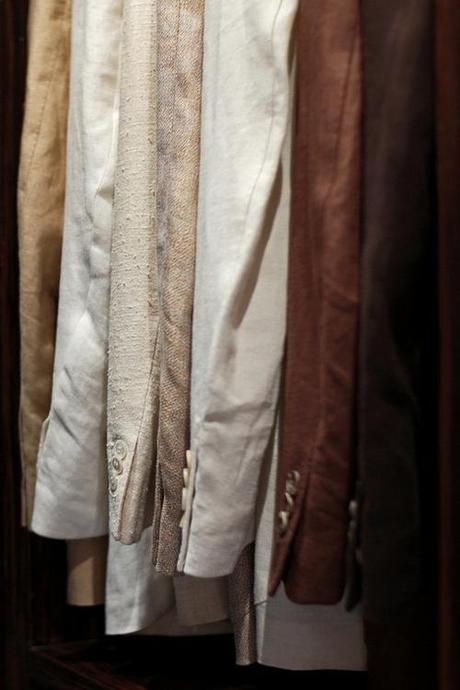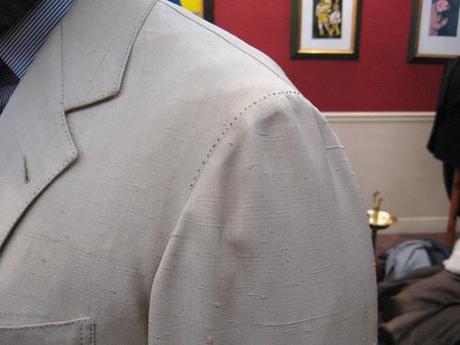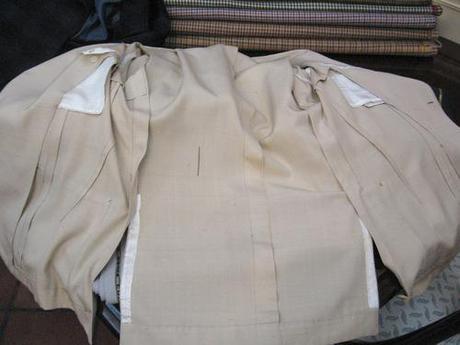Lately, during these warm, sunny afternoons, I’ve been finding myself daydreaming about raw silk jacketings. Raw silk, as many here already know, is the slubby fabric woven from cocoons that have been chewed through by young silkmoths. Normally, cocoons are boiled while the silkworms are still in them. When the silkworms/ moths have been allowed to chew through and escape, however, it creates a rougher fabric, which we call raw or wild silk.
There are various types of raw silk, and any of them can be made into clothing. Tussah and shantung tend to feature more prominent slubs. In a jacket, they can look like this single-breasted, two-button piece Will Boehlke saw at Winston Tailors. In Dupioni, a significantly less textured variation, they can look like this unstructured jacket I saw at Antonio Panico’s workshop or this beautiful cream double-breasted on the ever-dapper Keith Churchwell. (These photos are shown behind the cut below, for those who don’t want to click around)
As you can see, the cloth’s irregularities and slubs lend a certain beautiful texture to a jacket that no other fabric can achieve. Perhaps it’s for this reason that a friend of mine called raw silk jackets “summer’s tweed.” The fabric can also feel lightweight and durable, as well as lend an aristocratic air rarely seen in clothing these days.
The downside is that silk can wear rather warm, and if the sericin has been left on (the sticky protein that silkworms emit in order to protect their threads), the cloth can have a bit of a sheen. Furthermore, since raw silk jackets aren’t very common off-the-rack, they’re often have to be commissioned through a bespoke tailor. That, of course, comes at a cost.
Still, look at the photo of Beijing1980 below and tell me he doesn’t look wonderful in his textured silk jacket. He apparently has a few of them, which you can see behind the cut below. One is particularly slubby and another less so. They both make me want to get a “summer’s tweed” for next year.







